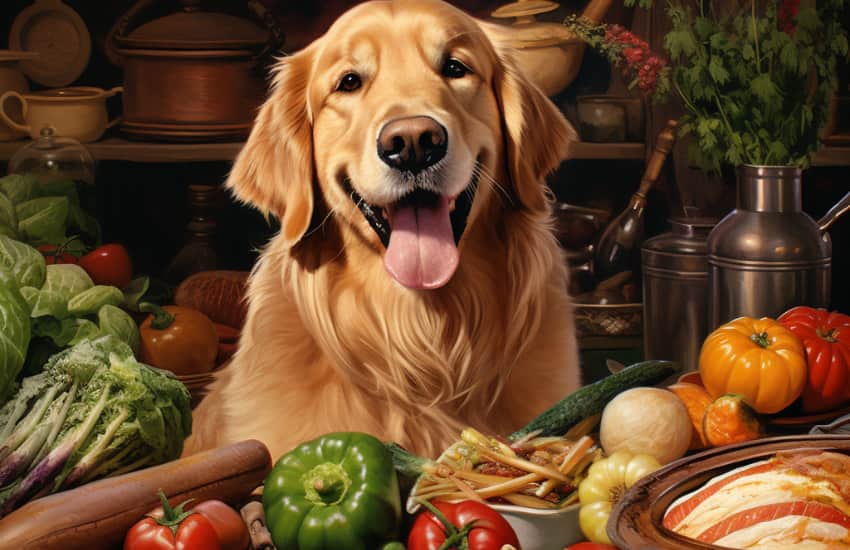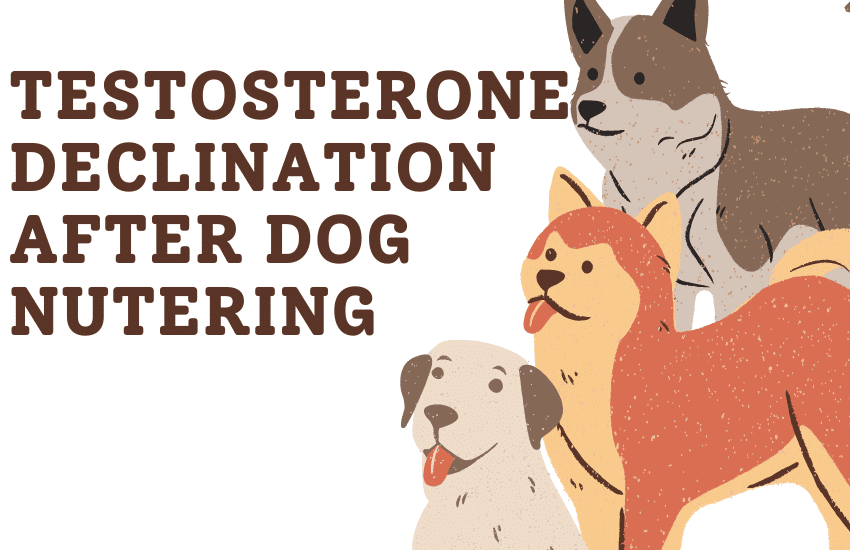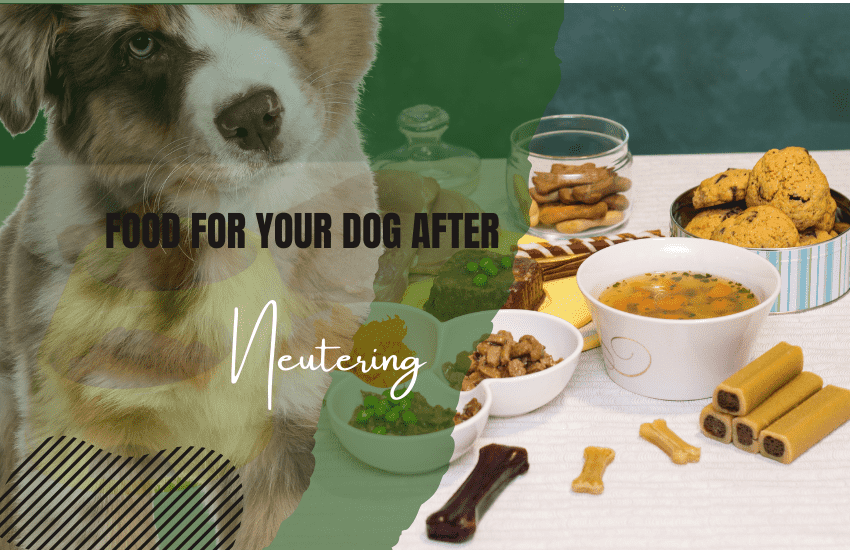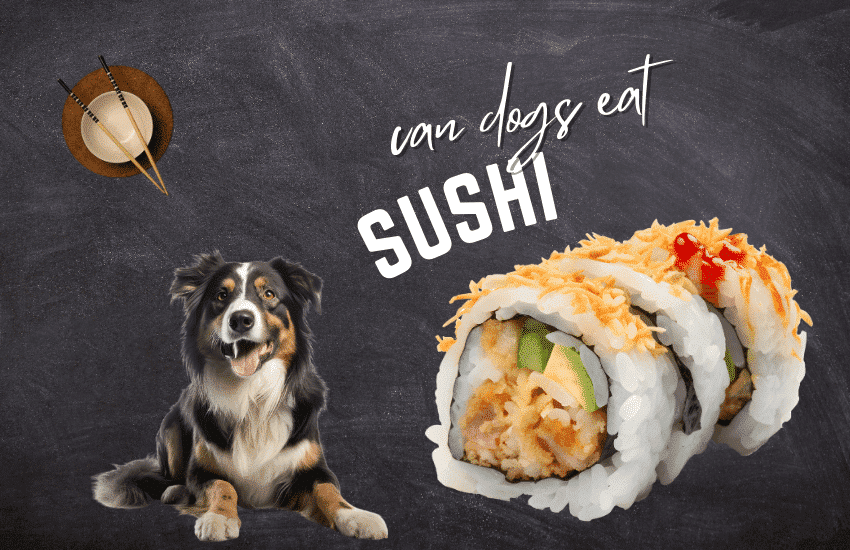When it comes to feeding our furry friends, we always want what’s best for their health and happiness. ‘How much chicken and rice to feed Dog’ is an article that dives into the simplicity and benefits of this popular meal. Many pet owners turn to the tried-and-true combination of chicken and rice for a nutritious diet or when their pooches have upset tummies.
While seemingly straightforward, there’s an art to getting the balance right to ensure it’s both wholesome and appealing to your pet. In this piece, we’ll explore the nutritional benefits of chicken and rice, how to prepare it safely for your dog, portion sizes, and when it’s appropriate to serve this comforting dish. Whether you are a seasoned dog owner or new to the pet parent community, get ready to discover how this classic duo can be a healthy addition to your dog’s diet.
Chicken Benefits for Your Dog.
If you’ve been looking for a healthy addition to your dog’s diet, look no further than chicken. Packed with protein, chicken provides essential building blocks for strong muscles and overall health. The lean nature of chicken also makes it an ideal option for dogs needing to maintain a healthy weight or manage weight-related conditions.
But the benefits continue beyond there. Chicken is also rich in vitamins and minerals such as B vitamins, iron, and zinc, which support a healthy immune system and contribute to shiny coats and strong teeth. Moreover, when appropriately prepared (no bones!), chicken can be a tasty alternative when your furry friend needs a break from regular dry kibble or canned food.
By introducing quality chicken into your dog’s diet in moderation, you’re nourishing their body and adding variety to keep mealtimes interesting – just be sure to consult with your vet before making any significant dietary changes!
Did you know that chicken is one of the least common allergens for dogs? While many pet owners may fear feeding their furry friend chicken will result in an allergic reaction, studies have shown that chicken is not a significant trigger for canine allergic responses. This may surprise many, especially considering the market’s prevalence of chicken-based dog foods.
The low rate of chicken allergies in dogs can be attributed to the fact that chickens are less likely to carry specific proteins and allergens than other meats. Regarding dog food allergens, beef and dairy products are more frequent culprits than chicken meat. Pet owners can feel more confident about incorporating wholesome chicken into their dog’s diet, knowing they are less likely to cause an adverse reaction.
According to a study by BMC Veterinary Research, only 15% of dogs have an adverse reaction to chicken. Overall, dog owners need to remain aware of potential food allergies in their pets but take comfort that including chicken in their diet is often a safe and healthy choice.
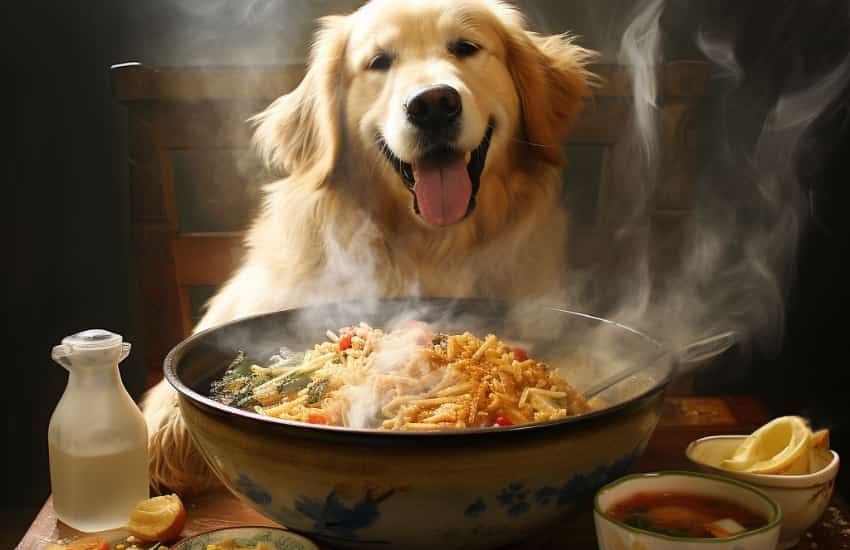
Rice Benefits for Your Dog.
Rice is often addressed as a beneficial addition to a dog’s diet, providing carbohydrates, fiber, and essential nutrients. This staple food can be easily digested by dogs, making it an ideal option for pets with sensitive stomachs or digestive issues. Additionally, rice can offer relief for dogs suffering from gastrointestinal upset or diarrhea. Its bland nature can help soothe the stomach and provide a source of energy during recovery.
Potential risk.
However, it’s important to note that while rice can offer numerous benefits for dogs, there are also potential dangers associated with its consumption.
- Overfeeding rice to your dog may lead to an imbalance in their diet and contribute to weight gain or other health issues like diabetes.
- When consumed excessively, rice metabolizes into purines, which break down to form uric acid. Predominantly excreted via urine, a surplus of this substance may result in complications like kidney stones or gout in dogs. Just imagine these tiny grains transforming into painful stones within your pup’s urinary system – not a picture conjuring comfort!
- Brown rice is considered a whole grain, and although it is high in nutrients, it is hard to digest.
- Furthermore, some types of rice contain arsenic. This naturally occurring toxic substance can be found in varying degrees in rice varieties due to the crop’s high ability for soil and water absorption. Which could pose long-term health risks if consumed excessively by dogs.
A recent study by the British Veterinary Association states that dogs who had plenty of rice in their diet showed higher levels of arsenic in their hair.
Pet owners must ensure that rice is included in their dog’s diet in moderation and as part of a balanced meal plan.
Types of rice contain lower levels of arsenic.
- Basmati and Jasmine rice, white and brown, especially those grown outside of the U.S., boast significantly lower arsenic concentrations.
- Instant rice and quick-cooking rice also have lower levels of arsenic.
Equally important is how we prepare rice for your dog. Rinsing it well or even following the method of cooking used for pasta (plentiful water and draining) can considerably reduce its arsenic content.
Consider replacing a portion of your brown rice intake with white rice.
Although white rice may not have as much fiber and vitamins, it contains 50 less arsenic than brown rice.
When done thoughtfully and appropriately, incorporating rice into your dog’s diet can be advantageous. By understanding the benefits and the potential risks associated with feeding your dog this popular grain, you can make informed decisions about how best to nurture your furry friend’s overall well-being.
For diabetic dogs, we recommend avoiding rice and other simple carbohydrates altogether.
When To Feed Your Dog Chicken and Rice
- Diarrhea: Chicken and rice can be their saving grace When your dog is dealing with the unpleasant symptoms of diarrhea. Veterinarians often recommend this simple combination due to its digestibility and soothing effect on irritated intestinal tracts. The beauty of chicken and rice doesn’t end at its ability to ease digestive discomfort; it’s also a rich source of lean protein and provides essential nutrients to help get your puppy back on their paws.
- Dietary Transition: When switching your dog’s food, sometimes a bland diet in between can help prevent stomach upset.
- Post-Operative Recovery: Veterinarians often recommend a bland diet after surgery or illness to avoid stressing the digestive system while your dog is recovering.
- Appetite Stimulant: If a dog is reluctant to eat their regular food due to illness or pickiness, chicken and rice can be more appealing and encourage them to eat.
- Allergy or Food Intolerance: If your dog is suspected of having a food allergy or intolerance, a vet might recommend a temporary switch to a bland diet like chicken and rice while determining the cause.
Remember, chicken and rice are a temporary meal solution and should not replace your dog’s regular balanced diet in the long term. Always consult with your vet before making any changes to your dog’s diet. They can provide the best advice tailored to your dog’s health needs.
How Much Chicken and Rice to feed dog
The amount of chicken and rice you should give your dog can vary based on several factors, including weight, age, activity level, and if it’s being used as a temporary bland diet for an upset stomach. As a general guideline, dogs should eat about 1/4 to 1/3 cup of meat protein per 20 pounds of body weight per day when fed as a part of a balanced diet.
And when it comes to how much rice to feed dog, A standard recommendation for a temporary bland diet is a 2:1 or 3:1 rice-to-chicken ratio.
For an accurate and safe portion size, it’s always best to consult your vet, who can provide guidance based on your pet’s needs.
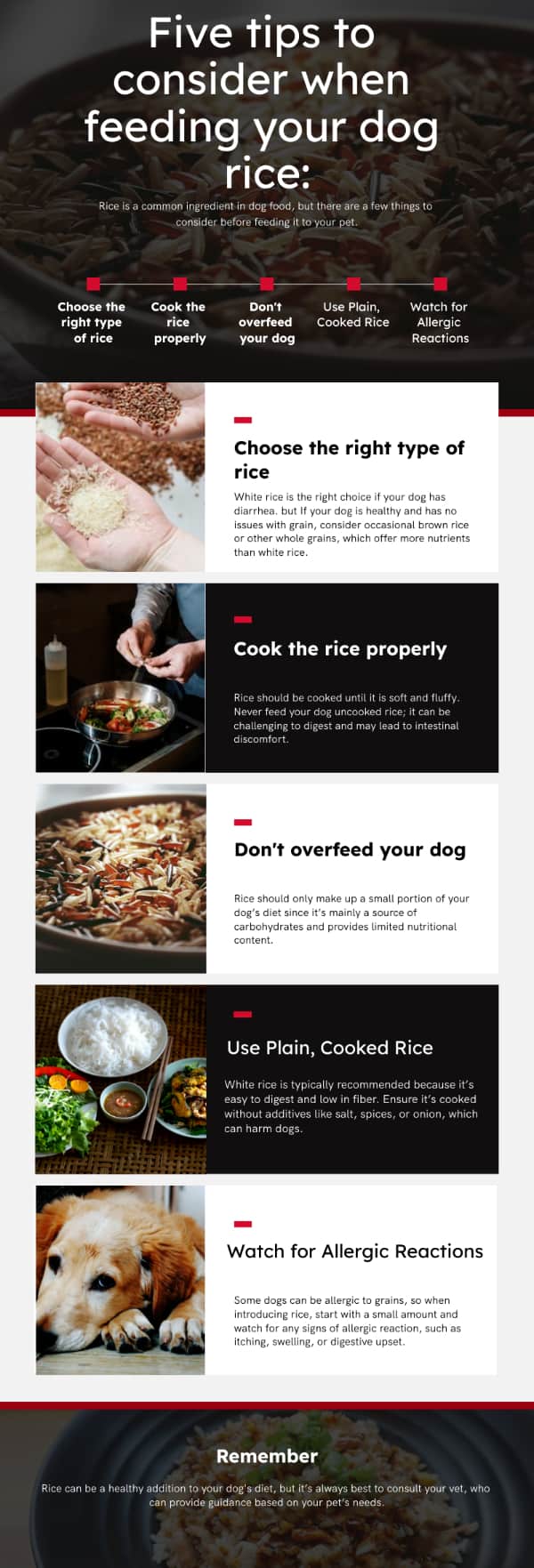
What are the alternatives to chicken and rice?
Suppose you’re looking to diversify your dog’s diet but still want to provide them with essential nutrients. In that case, there are several healthy alternatives to rice—foods like quinoa, sweet potatoes, and pumpkin offer various nutrition-dense options.
- Quinoa is a superfood containing all nine essential amino acids, vital building blocks in maintaining your dog’s muscles. It also packs enough fiber to keep your furry friend’s digestive system functioning optimally.
- Sweet potatoes aren’t just high in fiber but also rich in vitamin A, boosting eye health and immune function.
- Pumpkins are nutrient-dense vegetables that offer multiple benefits for dogs, including digestion support and relief from constipation or diarrhea due to their high fiber content.
Can I feed my dog rice and chicken every day?
Feeding your dog chicken and rice daily for an extended period is not recommended as it does not provide a balanced diet. Chicken and rice are often used as a temporary meal to settle an upset stomach or during a diet transition. Your dog’s regular diet should be complete and balanced, meaning it meets all their nutritional needs, which chicken and rice alone cannot provide.
Dogs require a certain balance of protein, fats, carbohydrates, vitamins, and minerals to maintain health. Prolonged feeding of just chicken and rice could lead to nutritional deficiencies or imbalances.
Suppose you’re considering home-cooked meals for your dog as a long-term diet. In that case, you should consult a veterinarian or a veterinary nutritionist. They can help you formulate a balanced diet with all the nutrients and supplements to keep your dog healthy.
How much rice to feed dog with diarrhea
When dealing with a dog with diarrhea, it’s important to offer a bland diet to help stabilize their stomach. Generally, you can start by feeding them a mixture of boiled white rice with boiled lean chicken or lean ground turkey, with the rice being the larger portion of the meal.
A good starting point is:
- Small dogs: 1/2 to 1 cup of cooked white rice per serving.
- Medium dogs: 1 to 2 cups of cooked white rice per serving.
- Large dogs: 2 to 4 cups of cooked white rice per serving.
You should feed small portions every 4 hours for the first 24 hours and then gradually increase the portion size and reduce the frequency of feeding over the next 48 hours. After their stool normalizes, you can slowly transition them back to their regular diet.
How long do chicken and rice take to stop dog diarrhea?
Chicken and rice typically take 24 to 48 hours to stop dog diarrhea. But remember, every pup is unique and may have differing reactions! Chicken and rice work magic because they are easy-to-digest food sources. The bland diet gives their upset tummies a break from processing complex food items while providing them with necessary nutrients.
Another reason chicken and rice are advantageous in helping dogs recover faster concerns their key components: lean protein from the chicken repairs tissues and fosters regaining strength, whereas cooked white rice boosts energy levels with its carbohydrate content. Also notable is that white rice boasts a high binding property perfect for solidifying stool! Just ensure you cook these ingredients with no seasoning or oil.
Can Rice and Chicken Constipate A Dog?
Veterinarians often recommend plain-cooked chicken and rice as a remedy for dogs with upset stomachs. Chicken provides high-quality protein essential for health, while rice is an easily digestible carbohydrate source that is generally very good at soothing an upset stomach. However, moderation is key here.
Feeding these items excessively or without balancing them with other nutrients could lead to constipation due to a lack of fiber or over-consumption of certain nutrients. So yes, it can happen, but only if your feeding strategy needs to be balanced and appropriately portioned out.
Feeding your four-legged friend small amounts of chicken and rice should not cause any significant disruption in their bowel movements. But always remember to monitor what goes into their food bowl closely.
Recipes
When your dog is experiencing diarrhea, a simple chicken and rice recipe can help settle their stomach.
Here’s a basic recipe you can use:
Ingredients
- One cup of plain, boiled, boneless, skinless chicken breast.
- One cup of plain, boiled white rice (overcooked rice can help increase its digestibility).
Directions
- Boil the Chicken: Cut the chicken breast into small pieces and boil it in water until thoroughly cooked—no pink should be visible to ensure it’s easy on your dog’s stomach.
- Cook the Rice: Cook the white rice separately, ensuring it’s plain and contains no salt, butter, or seasonings. Adding more water than usual is often helpful to make the rice a bit mushier than you would for human consumption.
- Cool and Combine: Allow the chicken and the rice to cool to avoid burning your dog’s mouth. Once cool, mix them. The rice-to-chicken ratio should be about 2:1 or 3:1 since too much protein at once can also upset your dog’s stomach.
- Portion it Out: Start with small portions to see how your dog handles the food. A rough starting point is 1/4 to 1/3 cup of the mixture for a small dog, 1/3 to 1/2 cup for a medium dog, and 1/2 to 3/4 cup for a large dog, given over several meals throughout the day.
Remember, you should also consult with your vet, especially if your dog’s diarrhea persists for more than 24 hours or if your dog is displaying other symptoms like lethargy, vomiting, or decreased appetite. Your vet can give you more specific advice and determine if an underlying condition requires treatment.
If your dog is healthy and have no digesting issues, Try this recipe:
Ingredients
- one boneless, skinless chicken breast.
- One cup brown rice.
- One cup frozen peas and carrots.
- One tbsp olive oil.
- Half tbsp fresh parsley, chopped.
- One tsp chicken broth.
- one egg.
- one zinc tablet, crushed (optional).
Instructions
- Fill a pot with water and cook the brown rice according to package instructions. Drain and set aside.
- In a skillet, cook the chicken breast in olive oil for 5-6 minutes per side or until fully cooked. Shred or chop the chicken into bite-sized pieces when cool enough to handle.
- Mix the cooked rice, shredded chicken, peas and carrots, parsley, chicken broth, and egg in a large bowl. The egg helps to bind the ingredients.
- Portion the mixture into individual meal sizes and store any extras in the refrigerator for up to 4 days.
- At serving time, you can microwave your dog’s portion for 15-20 seconds to add warmth and extra aroma.
- Crush the zinc tablet and sprinkle it over the top before serving a portion to your dog. Zinc supports their immune system.
- Make adjustments depending on your dog’s size and needs.
This balanced recipe gives your dog high-quality protein from chicken, digestible carbs from rice and veggies, plus added nutrition. As always, provide plenty of fresh water.
A balanced chicken and rice meal for a dog would also incorporate vegetables and other nutrition sources to provide a well-rounded diet.
Ingredients
- Two cups of boneless, skinless chicken breast.
- One cup of brown rice.
- Two cups of mixed vegetables (carrots, peas, or green beans).
- One to two boiled eggs (shell removed).
- A few spoons of canned pumpkin (for fiber and digestion).
- Fish oil supplement (for essential omega-3 fatty acids).
Instructions
- Boil the chicken until fully cooked and cut it into small, bite-sized pieces.
- Cook the rice as per packaging instructions. Overcooking it a bit can make it easier for your dog to digest.
- Boil or steam the vegetables until they are soft. If you are using canned vegetables, make sure they are unsalted.
- Mix the boiled egg with the chicken, rice, and vegetables.
- Add the canned pumpkin and a few squirts of the fish oil supplement. Mix until everything is evenly distributed.
Adding a multivitamin supplement can ensure your dog gets all the required nutrients. It is always good to consult your vet before significantly changing your dog’s diet or introducing supplements.
This recipe should be used as part of your dog’s diet, not the entirety, and it should be balanced with dog kibble or other foods to ensure nutrient needs are met.
In conclusion, the chicken and rice combo is more than just a temporary fix for a dog with digestive suffering. It’s a healthy, digestible option that, when prepared correctly and served in moderation, can be a beneficial part of your dog’s regular diet. Throughout this article, we’ve covered the nutritional profiles of both chicken and rice, the importance of balance with other diet components, and safe preparation methods.
Remember, portion control is vital, and your vet should be the first port of call for personalized dietary advice for your canine companion. Whether you’re looking after a recuperating pooch or simply diversifying their diet, chicken and rice is a hearty meal. Always keep your pet’s individual needs, allergies, and preferences in mind to ensure mealtime is always both nutritious and delightful.


